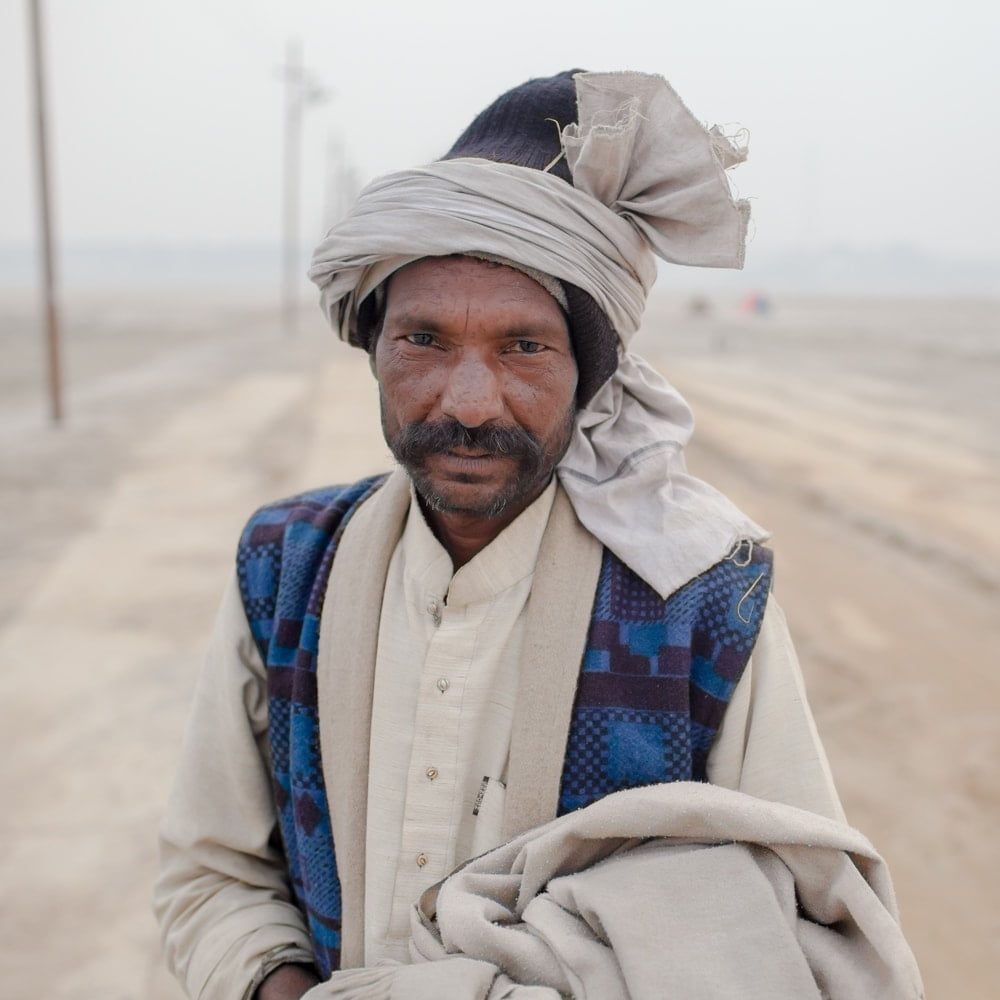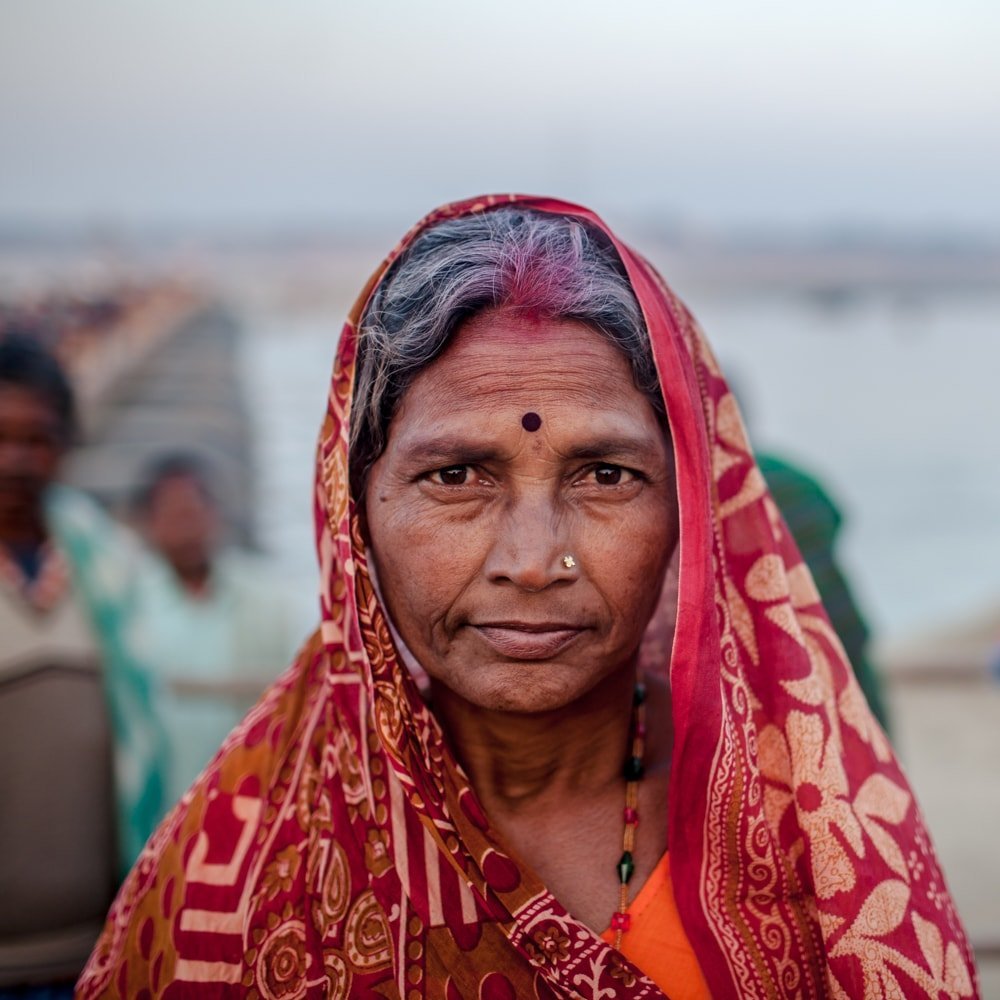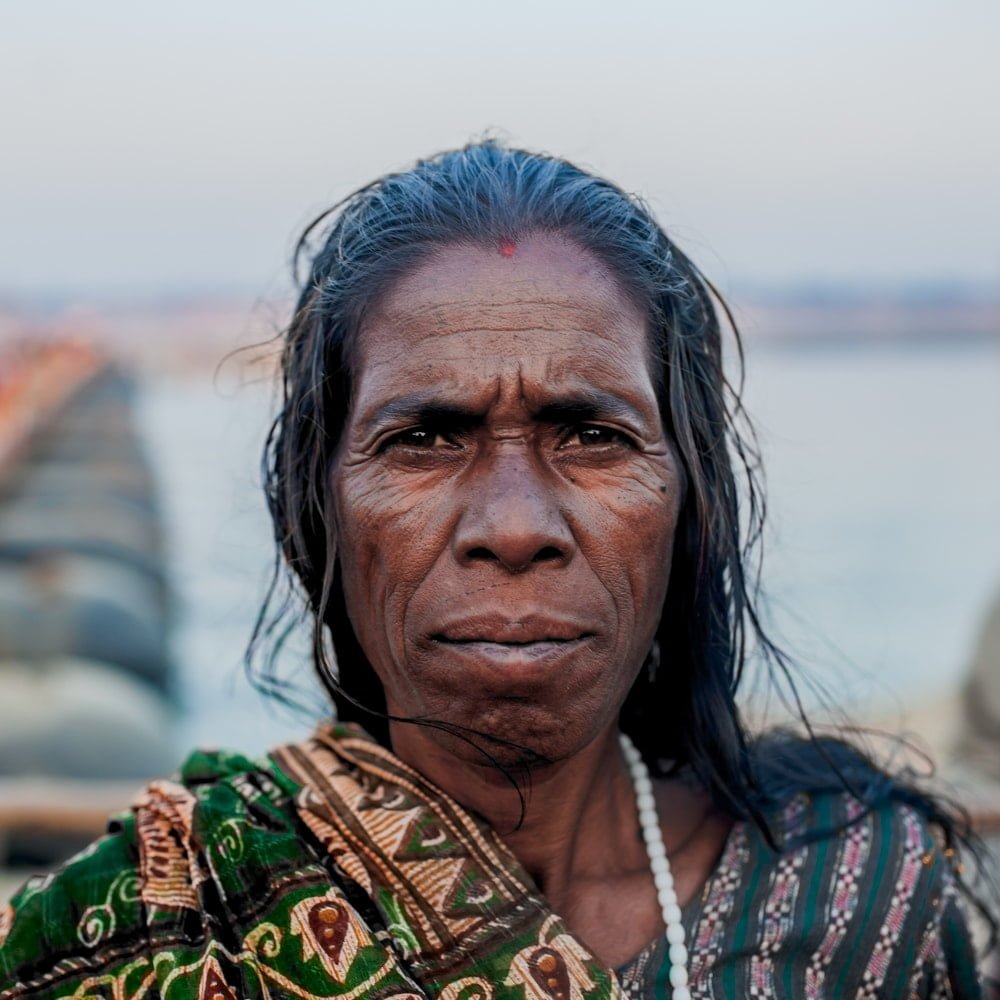The alluvial mud plains of the river Ganges allow, for a matter of months, a magical canvas city to be fashioned which attracts up to 100 mllion visitors over its short lifespan. Following the visitors’ departure the river swells again with monsoon rains and the city returns to its natural subterranean landscape, all traces of human occupation swept aside in the currents. At the heart of the temporary festival-city-landscape is a confluence of rivers where the Ganges, Yamuna and the mythical underground Saraswati come together in a flourish of colour and energy. This is the spiritual heart of Prayag, today known as Allahabad.
This cycle of building a city which is subsequently lost to a natural resurgence occurs every 6 years and, in some form or another, has been continuing for centuries. An annual fair, a Magh Mela, has been held since ancient times. In its present form the Kumbh Mela has existed since the mid 18th century. Its development and shifting spiritual, cutural and political roles has reflected the requirements of India’s former British rule and more recently the rise of Indian nationalism; it is not merely a site of Hindu worship and mass pilgrimage and has been used as a political tool to influence and enhance national interests.
Pilgrims come in their millions regardless of its political affiliations, mostly with the aim of developing spiritual learning, acquiring spiritual merit and achieving purification and atonement. The flowing waters of the Ganges and the proximity of the Sangam Triveni ( the eddying confluence ) are central to these ambitions, and rituals and bathing occur without cessation for 24 hours every day.
Here is a gallery of portraits of just a few of the pilgrims who attended the Maha Kumbh Mela in 2013, photographed on the alluvial plains of the banks of the river Ganges.



